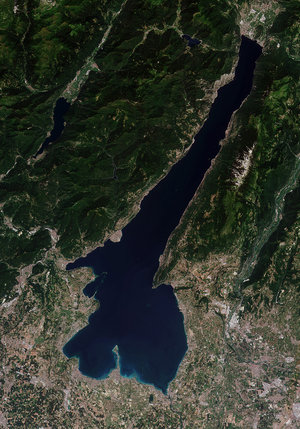Accept all cookies Accept only essential cookies See our Cookie Notice

About ESA
The European Space Agency (ESA) is Europe’s gateway to space. Its mission is to shape the development of Europe’s space capability and ensure that investment in space continues to deliver benefits to the citizens of Europe and the world.
Highlights
ESA - United space in Europe
This is ESA ESA facts Member States & Cooperating States Funding Director General Top management For Member State Delegations European vision European Space Policy ESA & EU Space Councils Responsibility & Sustainability Annual Report Calendar of meetings Corporate newsEstablishments & sites
ESA Headquarters ESA ESTEC ESA ESOC ESA ESRIN ESA EAC ESA ESAC Europe's Spaceport ESA ESEC ESA ECSAT Brussels Office Washington OfficeWorking with ESA
Business with ESA ESA Commercialisation Gateway Law at ESA Careers Cyber resilience at ESA IT at ESA Newsroom Partnerships Merchandising Licence Education Open Space Innovation Platform Integrity and Reporting Administrative Tribunal Health and SafetyMore about ESA
History ESA Historical Archives Exhibitions Publications Art & Culture ESA Merchandise Kids Diversity ESA Brand Centre ESA ChampionsLatest
Space in Member States
Find out more about space activities in our 23 Member States, and understand how ESA works together with their national agencies, institutions and organisations.
Science & Exploration
Exploring our Solar System and unlocking the secrets of the Universe
Go to topicAstronauts
Missions
Juice Euclid Webb Solar Orbiter BepiColombo Gaia ExoMars Cheops Exoplanet missions More missionsActivities
International Space Station Orion service module Gateway Concordia Caves & Pangaea BenefitsLatest
Space Safety
Protecting life and infrastructure on Earth and in orbit
Go to topicAsteroids
Asteroids and Planetary Defence Asteroid danger explained Flyeye telescope: asteroid detection Hera mission: asteroid deflection Near-Earth Object Coordination CentreSpace junk
About space debris Space debris by the numbers Space Environment Report In space refuelling, refurbishing and removingSafety from space
Clean Space ecodesign Zero Debris Technologies Space for Earth Supporting Sustainable DevelopmentLatest
Applications
Using space to benefit citizens and meet future challenges on Earth
Go to topicObserving the Earth
Observing the Earth Future EO Copernicus Meteorology Space for our climate Satellite missionsCommercialisation
ESA Commercialisation Gateway Open Space Innovation Platform Business Incubation ESA Space SolutionsLatest
Enabling & Support
Making space accessible and developing the technologies for the future
Go to topicBuilding missions
Space Engineering and Technology Test centre Laboratories Concurrent Design Facility Preparing for the future Shaping the Future Discovery and Preparation Advanced Concepts TeamSpace transportation
Space Transportation Ariane Vega Space Rider Future space transportation Boost! Europe's Spaceport Launches from Europe's Spaceport from 2012Latest
Lake Trasimeno, Italy
Thank you for liking
You have already liked this page, you can only like it once!
Lake Trasimeno, the fourth largest lake in Italy, is featured in this week’s Earth from Space image.
Zoom in to see this image at its full 10 m resolution or click on the circles to learn more about the features in it.
Lake Trasimeno is located in central Italy, around 20 km west of Perugia, and has an area of around 128 sq km. It is shallow, with its maximum depth of approximately 6 m, although the lake’s water level varies depending on meteorological and climatic conditions.
In this Copernicus Sentinel-2 image, captured on 6 August 2022, the lake’s emerald green colour is likely due to the presence of phytoplankton. Streaks in the water, particularly visible in the west, indicate the presence of soil and sediments which have been stirred up by winds. Dark coloured waters in the southern part of the lake indicate a presence of submerged and floating macrophytes (aquatic plants) as well as algae.
Surrounded by hills on three sides, Trasimeno is subject to heavy storms created by winds, especially from the north and west. There are three islets in the lake: Maggiore, Minore and Polvese (the largest). The lake’s shores are sparsely inhabited with only two popular villages: Castiglione del Lago and Passignano sul Trasimeno.
Italy is experiencing its worst drought in 70 years which has affected drinking water supplies, hydroelectric power and agricultural production. High temperatures, hot winds and lack of rainfall are the main causes of drought in the Umbrian region which saw Lake Trasimeno’s drop 1.3 m, reaching the limit of the hydrometric zero in July 2022.
Lake Trasimeno wasn’t the only Italian water body affected by drought this summer, with the Po River hitting record-lows. The Copernicus Sentinel-2 satellites capture high-resolution imagery that provides information about the conditions on Earth, such as water quality, plant life and coastal areas.
The mountainous terrain of the Umbrian Apennine Mountains surrounds Lake Trasimeno with many agricultural fields dotted around the area. Several other smaller lakes including Lake Montepulciano, Lake Chiusi and Lake Pietrafitta, can be seen south of Lake Trasimeno. Perugia, capital of the Umbria region, is a well-known cultural and artistic centre in Italy known for its chocolate and jazz festivals.
This image is also featured on our weekly Earth from Space video series.
-
CREDIT
contains modified Copernicus Sentinel data (2022), processed by ESA -
LICENCE
CC BY-SA 3.0 IGO or ESA Standard Licence
(content can be used under either licence)














 Germany
Germany
 Austria
Austria
 Belgium
Belgium
 Denmark
Denmark
 Spain
Spain
 Estonia
Estonia
 Finland
Finland
 France
France
 Greece
Greece
 Hungary
Hungary
 Ireland
Ireland
 Italy
Italy
 Luxembourg
Luxembourg
 Norway
Norway
 The Netherlands
The Netherlands
 Poland
Poland
 Portugal
Portugal
 Czechia
Czechia
 Romania
Romania
 United Kingdom
United Kingdom
 Slovenia
Slovenia
 Sweden
Sweden
 Switzerland
Switzerland






























